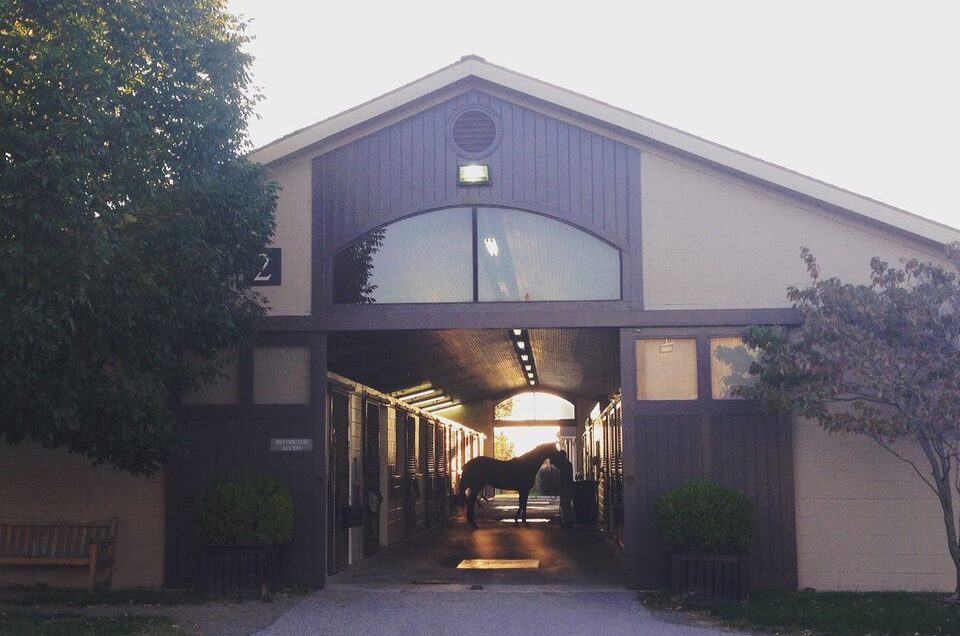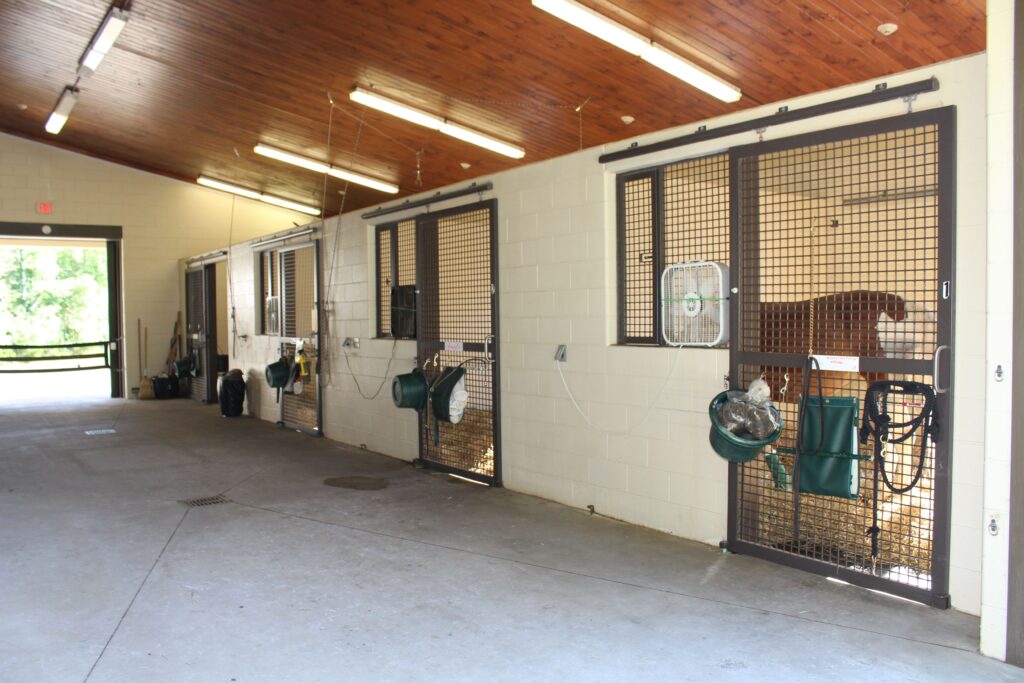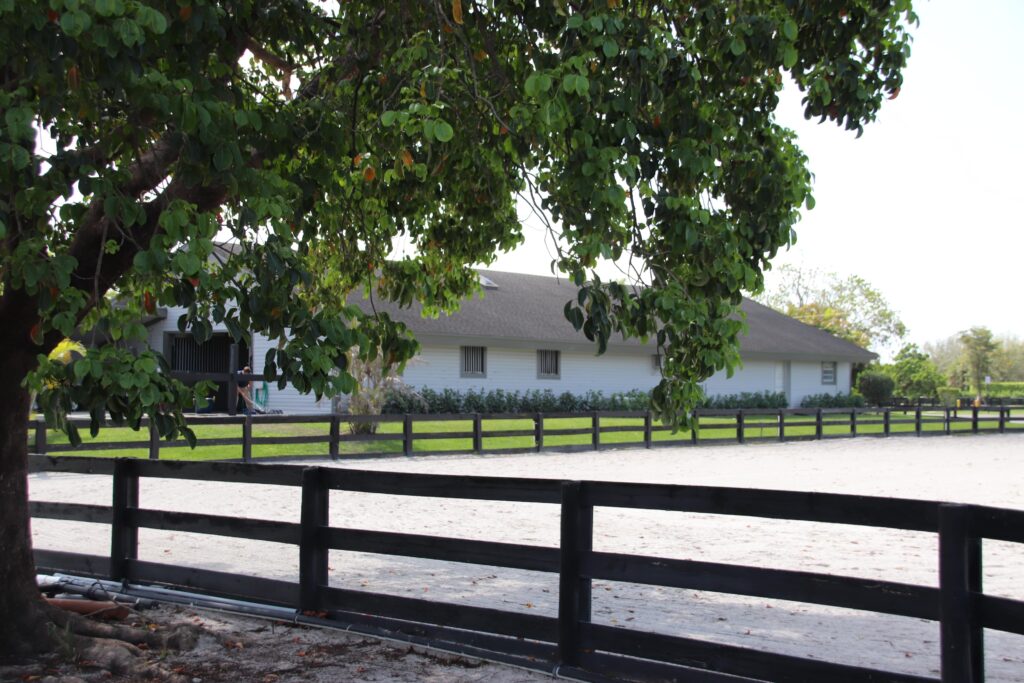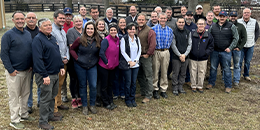
Lexington
Rood & Riddle Equine Hospital in Lexington has nine barns providing 150 stalls for hospital patients. All barns are well-ventilated and have numerous climate-controlled stalls for extreme weather conditions or when needed for the patient. Multiple barns are equipped with 1-ton hoists, which enable us to move neurologic or recumbent patients quickly and safely.

Saratoga
Rood & Riddle Equine Hospital in Saratoga has a total of four barns. Our main barn, our critical care barn, has 11 climate-controlled stalls. Our isolation barn has two stalls. Our Quonset hut barn has seven stalls used for outpatients. Finally, our bone scan barn has four stalls and is climate-controlled. We currently have two padded stalls with hoists that can be used for neurologic or recumbent patients in our hospital.

Wellington
Rood & Riddle Equine Hospital in Wellington has two barns. Our main barn has five climate-controlled stalls, a surgery suite, a viewing room and a large treatment room. Our second barn houses our bone scan, intern office, a large treatment room and 11 stalls.
We recognize that many owners would like to visit their horses while the patient is in the hospital. The following policy was created to enable a safe visit for the patient, the owner, the hospital staff and the other hospitalized patients.
• Owners visiting their horses must check in at the admissions desk each time
• Visiting hours: 8am – 8pm
• No smoking on our campus except in designated areas (employees and visitors)
• Dogs must be kept on a leash at all times on our campus. Dogs are not permitted in the barns. Owners are expected to clean up after their dogs
• Barn pharmacy rooms are off-limits to visitors. If a visitor needs something for their horse, they should ask the nursing technicians
• Visitors will have access to their horse (at the clinician’s discretion) and the medical chart, but not other patients and their medical charts
• Visitors are not allowed to handle their horses during procedures and are not allowed to take their horses out of the stalls unless approved by the clinician responsible for the horse’s care
• Visitors of hospitalized patients are allowed access only to the admissions building and the barn (at the clinician’s discretion) where their horse is housed
• Visitors are not allowed to stay overnight on the hospital campus
Infectious Disease Control at Rood & Riddle Equine Hospital
Because we run a state-of-the-art hospital, we are responsible for providing our patients with the best veterinary care possible. Minimizing the risk of infections in our patients during hospitalization is essential, as it should be in any hospital. For this reason, decreasing the exposure of equine patients and veterinary personnel to pathogens is an important aspect of our care. The main goal of our infection control program is to help prevent the potential spread of disease and to develop an early warning system for detecting disease-causing organisms.
Protocols that are in place to help decrease the spread of infectious diseases include:
• Segregation of patients according to the reason for admission
• Sanitation of footwear
• Hand washing and hand disinfection
• Limited traffic flow
• Environmental disinfectants
Each barn has different protocols based on the cases in the barn. Certain precautions must be taken with certain groups of patients, including plastic boots and gloves to be worn when entering the stall and foot mats at each stall door. The member of staff escorting you to the barn will advise you on these measures.
The entrance/exit of each barn has a foot mat or foot dip to prevent the spread of infectious disease from barn to barn.
There is a ready availability of hand sanitizer gel that should be used before and after contact with any patient to prevent cross-infection.
Additional protective measures may include wearing plastic boots and gloves to enter the stall. The plastic boots and gloves are put on from outside the stall before stepping past the threshold and are discarded immediately upon exiting the stall.
Controlling traffic patterns is key to minimizing patients’ exposure to infectious diseases. You will only be allowed into a barn if accompanied by or directed by an employee.
Each barn aisle is cleaned and disinfected daily. Some areas are disinfected twice daily; you may be asked to wait in admissions if this is currently being attended to in the barn.
As a worldwide leader in equine healthcare, we provide expertise for our patients in a caring, professional and ethical manner that creates value for the entire equine community.

2023 Lexington Shareholders

2023 Saratoga Shareholders

2023 Wellington Shareholders